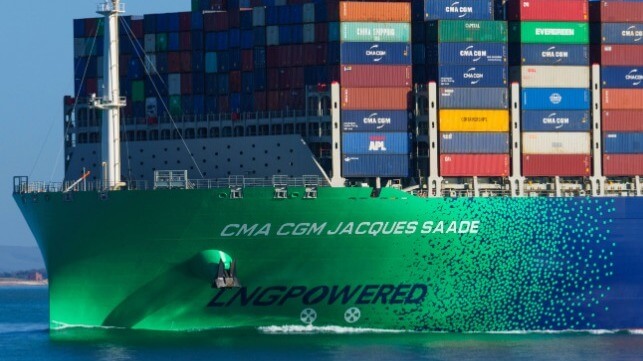LNG-Fueled Fleet to Double as Current Orders Are Delivered Says SEA-LNG

Industry coalition SEA-LNG is highlighting the strong growth in LNG-fueled vessels in the world fleet as well as the continuing investment in the new sector from leading shipping companies. The trade group which was launched eight years ago continues to promote LNG as a realistic alternative marine fuel pathway while also saying that engineering efforts are making strong progress on the environmental concerns associated with methane.
Citing data from DNV, SEA-LNG highlights that LNG-fueled vessels now account for more than two percent of the global shipping fleet and once the current orderbook is delivered it will double to four percent. Calculated based on deadweight tonnage (DWT) they report the LNG fleet is on track to represent six percent of the global fleet.
The number of LNG-fueled vessels has grown from 21 vessels in operation in 2010, many of them smaller ships operating regionally, to 590 in operation globally today. SEA-LNG notes that this includes the largest containerships which are twice the size of any operating in 2010. With a further 564 vessels on order, the total number of LNG-powered vessels in operation by the end of 2028 will be 1,154.
One of the strongest growth segments is LNG carriers, where there are 772 in operation and a further 341 were on order as of the end of 2023. Strong global demand for LNG and the planned growth of exports from the United States and Qatar’s massive production expansion are driving the orders of new carriers. Included in this, are orders linked to Qatar for the world’s largest LNG carriers.
Currently, DNV calculates that a third of the global orderbook is for LNG dual-fuel vessels. SEA-LNG says this means that over 2,000 of the world’s 60,000 largest vessels are LNG-powered. Calculated by DWT, the LNG-powered fleet in operation and on order will reach 142.5 million DWT, representing six percent of the world’s total 2,224 million DWT.
Supporting the expansion in LNG dual-fuel vessels, LNG bunkers are currently available in 185 ports, with an additional 50 being added next year, reports SEA-LNG. The bunkering vessel fleet they note has increased from a single vessel in 2010 to 60 in operation today, with a further 13 on order.
“It is gratifying that LNG is finally gaining favor amongst so many shipowners,” says Peter Keller, Chairman of SEA-LNG. “While we have always said that a basket of fuels will be required for shipping to meet the 2050 emissions reduction targets, the rationale for the LNG pathway remains unchanged. The LNG pathway using liquefied biomethane and eventually hydrogen-based e-methane currently provides the only viable option to making progress towards 2050, starting with immediate carbon reductions, now.”
Critics however point to methane emissions which environmentalists report are far more harmful to the environment than carbon emissions because they take long to dissipate. SEA-LNG however argues that LNG has virtually zero SOx and particulate matter emissions, and provides up to a 95 percent reduction of NOx emissions, and up to a 23 percent reduction in GHG emissions.
“With continued collaborative engineering efforts across the value chain, methane slip will be eliminated for all engine technologies within the decade,” asserts SEA-LNG. “Today, 2-stroke diesel cycle engines account for approximately 75 percent of the LNG-fueled vessel orderbook. These engines have effectively eliminated slip already. For low-pressure engine technologies where methane slip remains a challenge, manufacturers have already cut the levels of slip from low-pressure 4-stroke engines by more than 85 percent over the past 25 years.”
SEA-LNG points out that the current infrastructure will also support the transition to liquefied biomethane (bio-LNG) as it scales, and eventually, e-methane (renewable synthetic or e-LNG), providing ship owners and operators with the confidence that vessels ordered today are future-proofed for 2050 and beyond. They believe the development of these future fuels produced from the anaerobic digestion of waste materials, such as manure, provides a long-term pathway and a solution toward capturing additional methane that would otherwise be released into the atmosphere.
According to SEA-LNG, the recognition of the LNG pathway and the growth in the asset base is positioning LNG to play a significant, long-term role in maritime decarbonization.
No comments:
Post a Comment